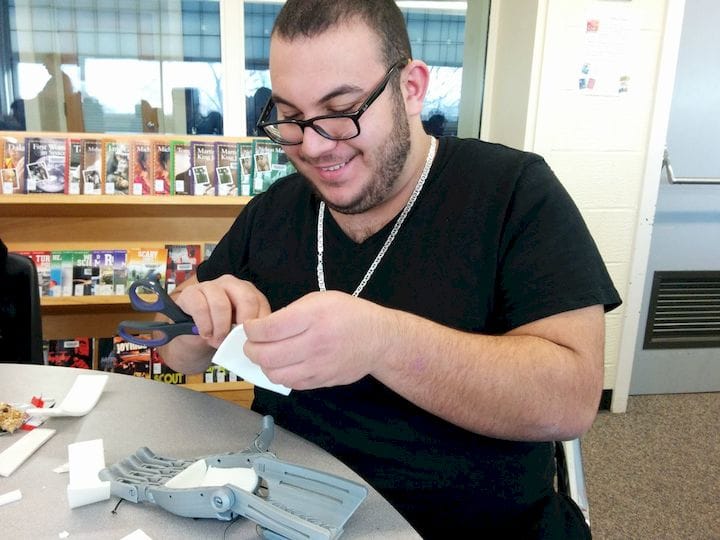![How do you dispose of waste from 3D printing? [Source: PrintYourMind3D]](https://fabbaloo.com/wp-content/uploads/2020/05/image-asset_img_5eb0a53a3e623.jpg)
A new contest highlights the growing problem of 3D printer waste.
The contest, sponsored by PrintYourMind3D, a Calgary-based 3D print reseller, intends on devising innovative ways to dispose of 3D printer waste.
Waste? What waste? There are those that somehow equate 3D printing with an automatic ecological benefit. I suspect line of thought might be based on fanciful notions of 3D printing everything at home instead of shipping items across the ocean, thus saving on transport costs. However, that vision never took hold for a number of reasons, but the eco-badge seems to have stuck.
3D printers do indeed create a great deal of waste, as any 3D printer operator will attest. One of the primary activities undertaken with 3D printers is rapid prototyping. Prototyping by definition involves iterative production of new versions of a part or product. While the final version is usually desirable, what happens to the other versions? The six, eighteen, or one hundred and forty-six other versions?
They’re all waste.
Even on single prints there is quite often waste. Machines that tend to fail every third print or so will produce considerable plastic waste material. Support structures also become waste as soon as they are painstakingly removed from a print.
It’s all waste.
Even final objects, once 3D printed, will wear out. Typically this happens more rapidly than with conventional objects because the more common 3D print materials often used are have poorer engineering properties. That final object wears out and is replaced by a fresh print. What happens to the worn out version?
It’s waste. Everything 3D printed is ultimately waste.
Some have proposed using desktop filament production devices to grind up and re-extrude the waste material to create fresh filament and generating a virtuous cycle. It sounds good, but in practice this is essentially impossible due to the differences in input materials: you cannot mix, say, ABS, PETG and PLA materials and produce good filament. Similarly you likely wouldn’t want to mix colors of the same material type. So recycling doesn’t really work unless you somehow can capture large quantities of objects made from identical material.
I’m not even going to start discussing the extreme challenges of extruding filament of proper quality for today’s 3D printing.
Thus there is a dilemma: what do you do with all those plastic dragons, support scraps and leftover filament?
Print Your Mind 3D hopes to find out by hosting a challenge for grade 10-12 students in Alberta. They explain:
“We challenge you to propose and develop a plan to convert waste PLA material or reuse it to create a new useful product or tool. This plan should include everything someone would need to properly execute this proposed idea including a budget, bill of materials, and detailed description of exactly how you propose the material will go from waste filament to the final product, describing every step along the way.
You can build and improve upon previous applications and technologies or create something completely novel. You must clearly articulate how your potential solution or product will be used in the real world, and what differentiates it from existing approaches and products.”
It’s a long duration challenge, with the winners being awarded in June of 2019. However, for that wait one lucky student group will receive a brand new Ultimaker 2+ desktop 3D printer. There are a lot more details at the link below.
While only Albertans can enter this contest, I am sure many worldwide will have interest in the outcome, as the problem exists anywhere there are 3D printers.
Which is pretty much everywhere these days.











An inventive designer has developed a method for producing 3D paper objects using recycled paper and 3D printed molds.